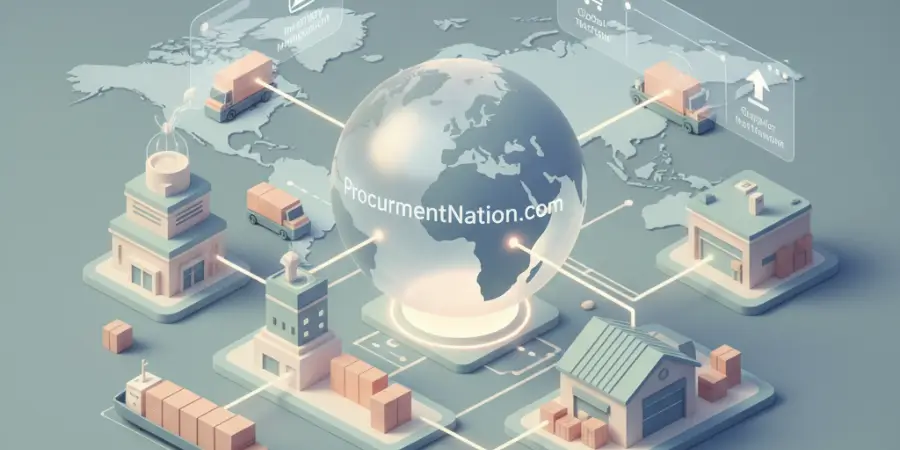What Are Document Workflows?
Modern organizations thrive on their ability to manage, share, and store information quickly and securely. The document workflow is at the foundation of this process—a system designed to control how a document moves from one stage to another, involving multiple people, actions, and approvals. Rather than simply digitizing paper documents, today’s workflows set clear steps for document creation, review, approval, signing, distributing, and archiving. Transitioning from messy paper trails or haphazard email chains to digital processes has helped organizations dramatically reduce wasted time and errors. The growing complexity of regulatory requirements and the distributed nature of workforces across the globe have only heightened the need for innovative solutions. Tools like legal entity management software allow businesses to design workflows that address both compliance concerns and the need for efficiency. With features to automate repetitive tasks, flag critical deadlines, and maintain a transparent audit trail, these platforms embed best practices directly into daily operations. Agility in workflow management is now essential for hybrid and remote organizations facing constant change. Whether onboarding a new client, processing HR paperwork, or handling compliance documentation, well-crafted document workflows anchor successful business operations.
Common Challenges in Document Management
Across industries, inefficiencies in document handling are a persistent source of frustration and lost productivity. One of the biggest challenges is version control—collaborators might unknowingly edit or approve old files, leading to miscommunication and costly errors. Documents stacked in crowded inboxes delay decision-making, while physical paperwork is prone to getting misplaced or delayed as it passes from one person to another. For teams working remotely or across multiple time zones, clumsy workflows can mean hours or days of wasted time tracking down the latest versions or chasing overdue approvals. There’s also the hurdle of compliance and data governance. Organizations in heavily regulated fields must adhere to strict document retention, access, and security rules. Failing to maintain clear audit trails or to provide timely, accurate responses during regulatory audits can result in legal and financial penalties. Administrative and HR managers ranked document chaos as one of the top barriers to productivity. As demands on speed and accuracy increase, companies are under mounting pressure to streamline how documents are handled from start to finish.
Key Features of Effective Workflow Solutions
The best document workflow platforms combine automation, accessibility, and user control. Automated workflows send documents directly to the right stakeholders instead of relying on manual routing that introduces errors and delays. Real-time editing and commenting options help teams collaborate, even if they’re continents apart. Role-based access ensures that only approved users can view, edit, or sign off on sensitive documents, dramatically reducing the risk of data leakage or tampering.
- Automated Routing: Documents are forwarded seamlessly, reducing bottlenecks and meeting timelines.
- Real-Time Collaboration: Team members can provide input, suggest edits, and resolve questions all in a single, accessible workspace.
- Role-Based Access Controls: Managers customize user permissions, maintaining confidentiality and only granting access when necessary.
- Integration Capabilities: Platforms sync data with email, storage, and ERP systems, reducing duplicate entries and minimizing manual rework.
- Electronic Signatures and Audit Trails: Digital sign-offs save hours and provide peace of mind by tracking every action taken during a document’s life.
- Cloud and Mobile Accessibility: With global workforces, staff must participate in workflows, whether from their office, home, or mobile device.
Organizations adopting these features often notice an immediate increase in reliability and user satisfaction. By replacing scattered, manual systems with one streamlined process, errors are caught early, routine approvals are accelerated, and accountability grows stronger.
Benefits of Digital Workflow Automation
Going beyond convenience, automation in document workflows delivers measurable business value. By eliminating manual steps, companies reduce repetitive, non-value-adding work. Automated reminders nudge users to take timely action, stopping bottlenecks before they form. Approval cycles, which could once drag on for weeks, are completed in a fraction of the time. The benefits ripple outwards. Employees who spend less time on document wrangling can pay more attention to high-impact projects, improving morale and productivity. Compliance efforts become easier, too—automated audit trails and document histories reduce the effort needed to prepare for inspections or respond to regulatory changes. Research indicates that digital transformation, including workflow automation, can cut operational costs and reduce process times by over 50%. Organizations with robust digital workflows experience fewer errors, stronger collaboration, and have a clear competitive advantage in adapting to change.
How to Choose the Right Solution
Selecting the right workflow platform starts with a clear awareness of your organization’s bottlenecks and priorities. Are document approvals regularly delayed? Are there compliance weak spots? Do teams complain about clunky or outdated tools? Mapping out these needs clarifies what to look for in a solution.
- Engage representatives from every key department to ensure features align with real-world challenges and goals.
- List essential features, such as integration with current platforms, customizable workflows, and robust security controls.
- Ask vendors about their onboarding, support, and training services; strong user adoption hinges on proper guidance and ease of use.
- Pilot the top solution with a small project or department before scaling up to the whole organization. Solicit detailed feedback from pilot users and address pain points quickly.
Many teams find that incremental implementation, rather than a disruptive overhaul, is the best way to win buy-in and ensure a successful transition to new workflows.
Security and Compliance Considerations
With heightened cyber threats and increasingly strict regulations, robust security in document management is vital. End-to-end encryption, multi-factor authentication, and carefully managed permissions help protect sensitive files from unauthorized access. Workflow solutions must include detailed logs—recording every change, view, or approval for later review. These safeguards aren’t optional for healthcare, finance, or legal organizations; they’re needed for internal policies and regulatory mandates. Thorough audit trails make compliance audits simpler and less stressful. Regularly reviewing security settings and processes—alongside promptly updating or patching software—can help shield against new vulnerabilities and evolving threats.
Measuring Workflow Success
Implementation is only the beginning. Success in document workflow management relies on continuous measurement and improvement. KPIs such as approval cycle length, reduction in document errors, and percentage of user adoption are useful barometers. Organizations may also track how much time employees save and gauge user satisfaction with regular surveys or interviews. Frequent performance reviews ensure that processes don’t stagnate and that any lingering frustrations are addressed. Responsive support, ongoing training, and a willingness to refine workflows align the system with changing business needs and user expectations.
Future Trends and Innovations
Document management is on the cusp of even greater transformation. Artificial intelligence is beginning to automate routing, error detection, and compliance monitoring. Machine learning algorithms can recommend workflow improvements or flag risky activity before problems emerge. The demands of hybrid work will keep pushing innovations toward cloud-native and mobile-first solutions that serve distributed teams. Forward-thinking organizations monitor these emerging trends to ensure their processes stay efficient and secure. By embracing adaptable, technology-driven workflows, businesses position themselves to thrive regardless of team size, industry, or future challenges. Strong document workflows aren’t just about organizing files—they are the backbone of operational agility, regulatory readiness, and collaborative success in the digital age.
















